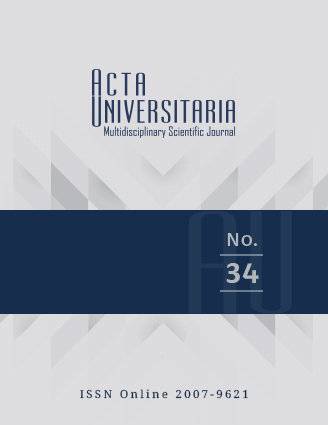Published 2024-07-24
How to Cite
Abstract
This research presents the design of an application to detect covid-19 using convolutional neural networks and X-ray images in two scenarios (covid/Non-covid and covid/Normal/Pneumonia). To avoid overfitting online data augmentation, dropout, batch normalization, and Adam optimizer was used. The three-class network was used as a pre-trained model, tuning only the dense and output layers to obtain the binary model. Additionally, hyper-parameter optimization was used to get dropout probabilities, activation functions, and neurons. The learning rate was adjusted using callbacks to avoid local optimums. Networks were converted to TensorFlow.js format and embedded locally in a hybrid application using Ionic and Capacitor and were deployed through Firebase to help provide diagnostics. The application obtained an accuracy of 98.61% and 96.48% for two and three classes, respectively, achieving higher performance when compared to other proposals (offline models) in the literature and using fewer training parameters.
References
- American College of Radiology (ACR). (March 11, 2020). ACR Recommendations for the use of chest radiography and computed tomography (CT) for suspected covid-19 infection. https://www.acr.org/Advocacy-and-Economics/ACR-Position-Statements/Recommendations-for-Chest-Radiography-and-CT-for-Suspected-covid19-Infection
- Beysolow II, T. (2017). Introduction to deep learning using R. A step-by-step guide to learning and implementing deep learning models using R. Apress.
- Bosowski, P., Bosowska, J., & Nalepa, J. (2021). Evolving deep ensembles for detecting covid-19 in chest X-Rays. IEEE International Conference on Image Processing (ICIP), 3772-3776. https://doi.org/10.1109/ICIP42928.2021.9506119
- Chollet, F. (2018). Deep learning with Python. Manning Publications Co.
- Chung, M., Bernheim, A., Mei, X., Zhang, N., Huang, M., Zeng, X., Cui, J., Xu, W., Yang, Y., Fayad, Z. A., Jacobi, A., Li, K. S., & Shan, H. (2020). CT Imaging features of 2019 novel coronavirus (2019-nCoV). Radiology, 295(1). https://doi.org/10.1148/radiol.2020200230
- Chung, A. (2020). Actualmed covid-19 chest x-ray data initiative. https://github.com/agchung/Actualmed-covid-chestxray-dataset
- Clevert, D. A., Unterthiner, T., & Hochreiter, S. (2016). Fast and accurate deep network learning by exponential linear units (ELUs). Johannes Kepler University, Linz, Australia, pp. 1-14. arXiv:1511.07289v5
- Cohen, J., Morrison, P., & Dao, L. (2020). covid-19 image data collection: prospective predictions are the future. https://github.com/ieee8023/covid-chestxray-dataset
- European Society of Radiology (ESR). (2021). [Eurorad]. https://www.eurorad.org/advanced-search?search=covid&sort_by=published_at&sort_order=DESC&page=5
- Github. (2020). covid-19 Chest X-Ray Dataset Initiative. https://github.com/agchung/Figure1-covid-chestxray-dataset
- Google. (2023). Firebase. https://firebase.google.com/
- Gutierrez, A., Ansuategi, A., Susperregi, L., Tubío, C., Rankic, I., & Lenza, L. (2019). A benchmarking of learning strategies for pest dete and identification on tomato plants for autonomous scouting robots using internal databases. Journal of Sensors, 2019(1), 1-16. https://doi.org/10.1155/2019/5219471
- Ioannis, D. A., & Tzani, B. (2020). covid-19: automatic detection from X-Ray images utilizing transfer learning with convolutional neural networks. arXiv:2003.11617
- Ionic. (2023). Cross-platform mobile App development: Ionic framework. https://ionicframework.com/
- Jacobi, A., Chung, M., Bernheim, A., & Eber, C. (2020). Portable chest X-ray in coronavirus disease-19 (covid-19): a pictorial review. Clinical Imaging, 64, 35-42. https://doi.org/10.1016/j.clinimag.2020.04.001
- Kaggle Inc. (2023). Chest X-Ray images (Pneumonia). https://www.kaggle.com/paultimothymooney/chest-xray-pneumonia
- Loey, M., Smarandache, F., & Khalifa, N. E. M. (2020). Within the lack of chest covid-19 X-ray dataset: a novel detection model based on GAN and deep transfer learning. Symmetry, 12(4), 1-19. https://doi.org/10.3390/sym12040651
- Mahmud, T., Rahman, M. A., & Fattah, S. A. (2020). CovXNet: a multi-dilation convolutional neural network for automatic covid-19 and other pneumonia detection from chest X-ray images with transferable multi-receptive feature optimization. Computers in Biology and Medicine, 122, 103869. https://doi.org/10.1016/j.compbiomed.2020.103869
- Narin, A., Kaya, C., & Pamuk, Z. (2020). Automatic detection of coronavirus disease (covid-19) using X-ray images and deep convolutional neural networks. arXiv:2003.10849
- Ozturk, T., Talo, M., Yildirim, E. A., Baloglu, U. B., & Yildirim, O. (2020). Automated detection of covid-19 cases using deep neural networks with X-ray images. Computers in Biology and Medicine, 121, 1-11. https://doi.org/10.1016/j.compbiomed.2020.103792
- Pedamonti, D. (2018). Comparison of non-linear activation functions for deep neural networks on MNIST classification task. arXiv:1804.02763v1
- Radiopaedia. (2021). [covid-19]. Radiopaedia.org. https://radiopaedia.org/articles/covid-19-4?lang=us
- Rahimzadeh, M., & Attar, A. (2020). A modified deep convolutional neural network for detecting covid-19 and pneumonia from chest X-ray images based on the concatenation of Xception and ResNet50V2. Informatics in Medicine Unlocked, 19, 1-9. https://doi.org/10.1016/j.imu.2020.100360
- Rong, G., Mendez, A., Assi, E. B., Zhao, B., & Sawan, M. (2020). Artificial Intelligence in Healthcare: review and prediction case studies. Engineering, 6(3), 291–301. https://doi.org/10.1016/j.eng.2019.08.015
- Rosebrock, A. (2017). Deep learning for computer vision with Python. PyImageSearch.
- SAS Institute Inc. (2023). Machine learning: What it is and why it matters SAS. https://www.sas.com/en_us/insights/analytics/machine-learning.html#machine-learning-importance
- Sethy, P. K., & Behera, S. K. (2020). Detection of coronavirus disease (covid-19) based on deep features. Preprints.org. https://doi.org/10.20944/preprints202003.0300.v1
- Springenberg, J. T., Dosovitskiy, A., Brox, T., & Riedmiller, M. (2015). Striving for simplicity: the all convolutional net. arXiv:1412.6806v3
- Srivastava, N., Hinton, G., Krizhevsky, A., Sutskever, I., & Salakhutdinov, R. (2014). Dropout: a simple way to prevent neural networks from over. Journal of Machine Learning Research, 15, 1929-1958.
- Tensorflow. (2023). TensorFlow.js | Machine Learning for JavaScript Developers. TensorFlow.org.
- https://www.tensorflow.org/js
- The Italian Society of Medical and Interventional Radiology (SIRM). (2020). [covid-19 database]. https://www.sirm.org/en/category/articles/covid-19-database/
- Wang, J., Ma, Y., Zhang, L., Gao, R., & Wu, D. (2018). Deep learning for smart manufacturing: methods and applications. Journal of Manufacturing Systems, 48, 1-13. https://doi.org/10.1016/j.jmsy.2018.01.003
- Wang, L., Lin, Z. Q., & Wong, A. (2020). covid-Net: a tailored deep convolutional neural network design for detection of covid-19 cases from chest X-Ray images. arXiv:2003.09871
- World Health Organization (WHO). (June 06, 2020). Coronavirus disease (covid-19) pandemic. https://www.who.int/emergencies/diseases/novel-coronavirus-2019
- World Health Organization (WHO). (2022). Coronavirus. https://www.who.int/health-topics/coronavirus#tab=tab_1
- Wuest, T., Weimer, D., Irgens, C., & Thoben, K. D. (2016). Machine learning in manufacturing: advantages, challenges, and applications. Production & Manufacturing Research, 4(1), 23-45. https://doi.org/10.1080/21693277.2016.1192517
- Yu, T., & Zhu, H. (2020). Hyper-Parameter optimization: a review of algorithms and applications. arXiv:2003.05689
- Zhou, S., Wang, Y., Zhu, T., & Xia, L. (2020). CT features of coronavirus disease 2019 (covid-19). American Journal of Roentgenology, 214(6), 1287-1294. https://doi.org/10.2214/AJR.20.22975

